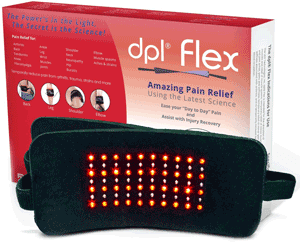If you’ve ever come home from the tanning bed and discovered that you’ve developed a mystery rash, there could be several causes.
Tanning bed rash can be purely cosmetic, causing no physical discomfort whatsoever.
It can also be itchy, painful, and unattractive. In either case, you’re probably anxious to get rid of it as soon as possible.
Luckily, once you’ve done a bit of detective work to uncover the cause of the rash, you’re well on your way to finding the cure.
If your tanning bed rash has caused you to worry about your health, rest assured that the causes of these skin ailments are rarely dangerous.
Here are the most common reasons for those pesky little bumps and what you can do to get rid of them and avoid a repeat appearance.
Table of Contents
Too Much UV Exposure
Tanning beds make you tan through lights that emit UV rays.
Some people are more sensitive to UV exposure than others, and oftentimes this sensitivity results in a bumpy red rash that may itch or burn.
This is the most common cause of tanning bed rash, and one that is incredibly easy to remedy.
The first thing you need to do is stop going to the tanning bed until the rash is gone.
Don’t lay out in the sun, either, as it emits the exact same rays, so it will exacerbate the problem.
Once the rash has disappeared, you can resume your trips to the tanning salon, but talk to the staff and ask them to reduce the time you spend in the tanning bed.
If this turns out to be the cause of your mystery skin ailment, time reduction will solve the problem.
Heat Rash
Heat rash is another common culprit.
This is different than UV overexposure, as people who are prone to this sort of skin eruption will develop the rash any time they overheat, whether they’re in the sun, a tanning bed, or an indoor gym.
The raised, splotchy red patches of heat rash can be extremely painful, and especially sensitive to touch or fabric rubbing against them.
If you’re suffering from heat rash, taking a cool to lukewarm shower after tanning, and coating the affected area in calamine lotion should help it dissipate within a few hours.
Heat rash most commonly occurs under clothing, so if you’ve got heat rash from tanning, it’s probably because you’re wearing underwear or a swimsuit in the tanning bed.
Switching to tanning nude may remedy the problem.
Dry Skin
You probably already know that hydrated skin tans better than dry skin.
What you may not know is that dry skin is also more prone to rashes from tanning.
The tanning bed dries your skin out further, so it is particularly important to make sure that you’re moisturizing properly if you’ve got a rash.
Apply a high quality, hypoallergenic, unscented lotion at least twice a day, and wear one of the better brands of indoor tanning oil or lotion every time you go to the tanning salon.
You should also take warm shower, rather than hot, and avoid soaking in the bathtub for prolonged periods of time, as this will suck the moisture out of your skin.
Properly caring for your skin and keeping it in optimal condition to prevent dryness will do away with your rash once and for all.
Allergic Reactions to External Products
If you have sensitive skin that often breaks out due to the use of certain soaps, perfumes, cosmetics or household cleaners, an allergic reaction should be one of the first things you investigate when you develop a tanning bed rash.
Contact dermatitis can range from mildly uncomfortable to unbearably painful and itchy.
In some cases, you might need to use an antihistamine or steroid cream to reduce the reaction.
If you’re using an indoor tanning oil or lotion, stop using it immediately and see if that makes a difference.
If it doesn’t, ask the staff about the possibility that you could be reacting to the sanitizer they use to clean the beds, and see if there is anything they can do to help you.
If it’s the products you’re putting on your skin, you can quickly and easily solve the problem.
If it’s the tanning bed sanitizer, you might need to stop going to the tanning salon.
Light Sensitivity Disorder
Luckily, light sensitivity disorder is a fairly rare occurrence, so it is unlikely that this is the cause of your tanning bed rash.
But if you’ve eliminated all of the more common causes, and your rash is still hanging around it’s probably the culprit.
People with light sensitivity disorder suffer from something akin to an allergic reaction to UV rays.
If this is the cause of your rash, the only measure you can take that will eliminate the rash is to stop tanning.
Some die hard tanners decide that they’d rather deal with the rash than stop going to the tanning bed, but most people find it to be intolerable.
If you do have light sensitivity disorder and can’t stand the idea of not being tan, remember that spray tanning is always an option, as are self-tanning lotions.
As you can see, there are many different causes of tanning bed rash. No matter what the root cause, dealing with them can be seriously unpleasant.
But the good news is that none of them are particularly dangerous. For the most part, they are just an annoyance, and if you take the proper measures, a temporary one at that.
Please note that if you have a persistent rash that you can’t get rid of on your own, you should contact your physician for a referral to a dermatologist.
It may have origins other than the tanning bed, and it is important for your health and safety to have a qualified professional’s help with diagnosis and treatment.
Don’t go to the tanning bed until you’ve seen the doctor, just in case it is contagious.
Once it’s gone, you can resume your trips to the salon.


